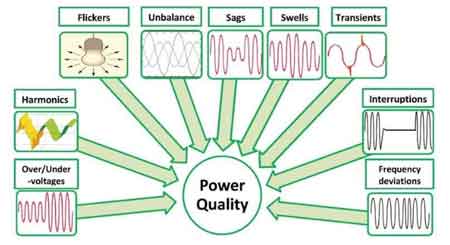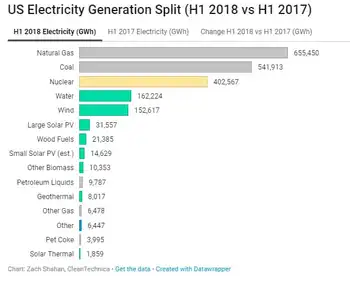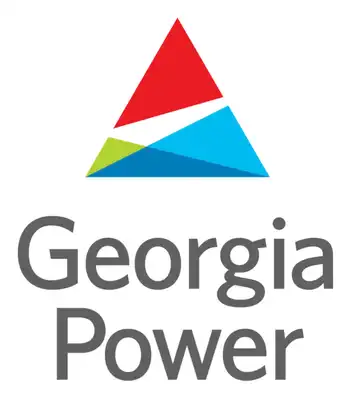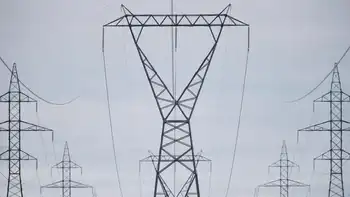The Push for Fusion Power Goes On
By New York Times
NFPA 70e Training
Our customized live online or in‑person group training can be delivered to your staff at your location.

- Live Online
- 6 hours Instructor-led
- Group Training Available
A bubble floating in the liquid — phosphoric acid — started to shine, brightening into an intense ball of light like a miniature star.
The shining bubble did not produce any significant energy, but perhaps someday it might, just like a star. A few small companies and maverick university laboratories, including this one at U.C.L.A. run by Seth Putterman, a professor of physics, are pursuing quixotic solutions for future energy, trying to tap the power of the Sun — hot nuclear fusion — in devices that fit on a tabletop.
Dr. PuttermanÂ’s approach is to use sound waves, called sonofusion or bubble fusion, to expand and collapse tiny bubbles, generating ultrahot temperatures. At temperatures hot enough, atoms can literally fuse and release even more energy than when they split in nuclear fission, now used in nuclear power plants and weapons. Furthermore, fusion is clean in that it does not produce long-lived nuclear waste.
Dr. Putterman has not achieved fusion in his experiments. He and other scientists form a small but devoted cadre interested in turning small-scale desktop fusion into usable systems. Although success is far away, the principles seem sound.
Other researchers already have working desktop fusion devices, including ones that are descendants of the Farnsworth Fusor invented four decades ago by Philo T. Farnsworth, the television pioneer.
Achieving nuclear fusion, even in a desktop device, is not particularly difficult. But building a fusion reactor that generates more energy than it consumes is far more challenging.
So far, all fusion reactors, big and small, fall short of this goal. Many fusion scientists are skeptical that small-scale alternatives hold any promise of breaking the break-even barrier.
Impulse Devices, a small company in the small town of Grass Valley, Calif., is exploring the same sound-driven fusion as Dr. Putterman, pushing forward with venture capital financing. Its president, Ross Tessien, concedes that Impulse is a high-risk investment, but the potential payoffs would be many.
“You solve the world’s pollution problems,” Mr. Tessien said. “You eliminate the need for wars. You eliminate scarcity of fuel. And it happens to be a very valuable market. So from a commercial point of view, there’s every incentive. From a moral point of view, there’s every incentive. And it’s fun and it’s exciting work.”
The Sun produces energy by continually pressing together four hydrogen atoms — a hydrogen atom has a single proton in its nucleus — into one helium atom, with a nucleus of two protons and two neutrons. A helium atom weighs less than the four original hydrogen atoms. So by Einstein’s E
mc2 equation, the change in mass is transformed into a burst of energy.
That simplest fusion reaction, four hydrogens into one helium, works for turning a ball of gas like the Sun, 865,000 miles across, into a shining star. But it is far too slow for generating energy on Earth.
Other fusion reactions do occur quickly enough. Most current fusion efforts look to combine two atoms of deuterium, a heavier version of hydrogen with an extra neutron. For reactions that can achieve break even, the researchers look to fusing deuterium with tritium, an even heavier hydrogen with two neutrons.
The appeals of fusion are many: no planet- warming gases, no radioactive-waste headache, plentiful fuel. Even though only 1 out of 6,000 hydrogen atoms in sea water molecules is the heavier deuterium, that is enough to last billions of years.
“One bucket of water out of the ocean or a lake or a river has 200 gallons of gasoline worth of energy in it,” Mr. Tessien said. “It’s the holy grail of energy technologies, and everybody has the fuel for free.”
Tritium, a short-lived radioactive isotope, has to be generated in a nuclear reactor.
The tricky part is heating the atoms to the millions of degrees needed to initiate fusion and keeping the superhot gas confined.
Mainstream science is pursuing fusion along two paths. One is the tokamak design, trapping the charged atoms within a doughnut-shape magnetic field. An international collaboration will build the latest, largest such reactor in southern France in coming years. The $10 billion international project, called ITER, could begin operating around 2025 and is intended to demonstrate that all the scientific and technological challenges have finally been tamed. Commercial tokamak reactors could perhaps follow in 10 years.
The other mainstream approach is blasting a pellet of fuel with lasers, creating conditions hot and dense enough for fusion. The National Ignition Facility at Lawrence Livermore National Laboratory in California is to start testing that idea around 2010. The cost of the center, with 192 lasers, has soared to several billion dollars. Harnessing that approach will also take decades.
The recurrent criticism of fusion is that its promise has always been decades away. The task has proved harder and more expensive than what scientists anticipated when they started in the 1950s. Even if lasers and tokamaks prove technologically feasible, giant, expensive fusion reactors could still turn out to be too expensive to be practical.
So the mavericks ask: Why not take a closer look at some alternative approaches?
“It’s really a shame the Department of Energy has such a narrowly focused program,” said Eric J. Lerner, president and sole employee of Lawrenceville Plasma Physics in New Jersey, another alternative fusion company. Mr. Lerner has received NASA financing to explore whether his dense fusion focus might be good to propel spacecraft, but nothing from the Energy Department.
The department is spending $300 million on fusion research this year, and President Bush has asked for an increase to $428 million for next yearÂ’s budget. Almost all the increase would go to ITER.
The department supports research for many approaches, said Thomas Vanek, the department’s acting director for fusion energy sciences, but that has to fit within tight budgets. “Since the mid-’90s, it has been a tough environment for fusion energy.”
Some fusion scientists argue that fundamental physics makes these alternative approaches unlikely to pay off. Some agree that financing some high-risk, high-payoff research could be worthwhile.
“I personally think there should be more of these smaller ideas funded,” said L. John Perkins, a physicist at Lawrence Livermore. “Ninety-nine might fail, but one might pay off.”
Robert W. Bussard, an independent scientist, advocates a return to the Farnsworth Fusor, otherwise known as inertial confinement fusion. Farnsworth and Robert L. Hirsch, who later ran the Office of Fusion Energy for the Atomic Energy Commission, developed a fusor consisting of two electrically charged concentric spherical grids. They accelerated charged atoms, or ions, to the center.
“It’s like the electron guns in your TV tube,” Dr. Bussard said.
In the process, positively charged ions fly through the center, slow down as they approach the positively charged outer grid, then stop and fall back toward the center like a marble rolling back and forth in a bowl. Sometimes two ions collide at the center and fuse. But too often the ions run into the grids before they fuse. Dr. Bussard, a deputy to Dr. Hirsch at the Office of Fusion Energy in the Â’70s, said he had a design eliminating the grids.
Most fusion scientists doubt Dr. BussardÂ’s assertion that he has solved all the underlying physics issues with inertial electrostatic confinement and knows how to build a working fusion power generator.
Dr. BussardÂ’s Navy grants dried up two years ago, and he is looking for investors. Dr. Bussard said he needed a few million dollars to restart his research, and $150 million to $200 million to build a fusion reactor capable of generating 100 megawatts. One megawatt is enough power for 1,000 houses.
Mr. Lerner hopes to harness a phenomenon known as dense plasma focus, which is also an old idea. Take two cylinders, put a gas between them and set off a big electric spark. The jolt heats the gas and generates extremely strong, unstable magnetic fields that compress and heat the gas to fusion temperatures.
Mr. Lerner has a three-year, $1.5 million collaboration with the Nuclear Energy Commission of Chile to research dense plasma focus. After that, $10 million and another three years would be needed for engineering development, he estimated. A result could be a compact five-megawatt generator.
“The whole device would fit inside anyone’s good-size garage.” Mr. Lerner said. “If all goes well, we hope to have our first prototype within six years.”
Skeptical physicists say too much energy is lost along the way in dense focus fusion to reach the break-even point. Mr. Lerner said his calculations showed that the very strong magnetic fields reduced the energy losses.
Dr. Putterman of U.C.L.A. and Mr. Tessien of Impulse Devices are perhaps furthest from success. They have yet to show fusion occurring. The phenomenon of glowing light as the sound-driven bubbles expand and collapse has been known since the 1930s, leading to speculation, but not proof, that the bubbles would perhaps be compressed so violently that trapped atoms might fuse.
In 2002, researchers led by Rusi P. Taleyarkhan, now a professor of nuclear engineering at Purdue University, claimed to have achieved fusion in such a system. That result has yet to be reproduced outside Dr. TaleyarkhanÂ’s laboratories.
Neither Dr. Putterman nor Mr. Tessien could duplicate that experiment.
Mr. Tessien, who started his quest for sonofusion 12 years ago, said he had abandoned using Dr. TaleyarkhanÂ’s approach and returned to his own designs. Those use steel spheres, allowing high pressures to be exerted on liquids in addition to the forces of the vibrating sound waves. He is confident that he will find fusion.
“There is zero question that fusion is hiding in some system,” he said. “I just need to figure out the right recipe.”
Dr. PuttermanÂ’s group experiments with different liquids like the phosphoric acid in the rotating cylinder. Phosphoric acid, it turns out, gives out much brighter light, but so far no fusion.
Dr. Putterman receives most of his financing from the Defense Department, although he has gotten money from novel sources, including $72,000 from the BBC, which was making a program about sonofusion.
He is philosophical about why more money is not flowing, saying the scientists have not given the doubters a reason to stop doubting. “Maybe that’s the brutal answer,” he said. “People are waiting for it to work. Maybe some explanations are simple.”















